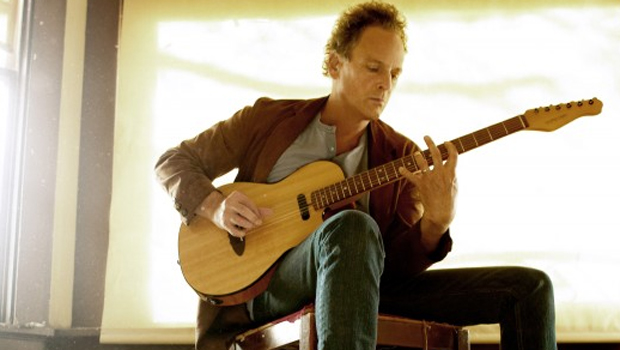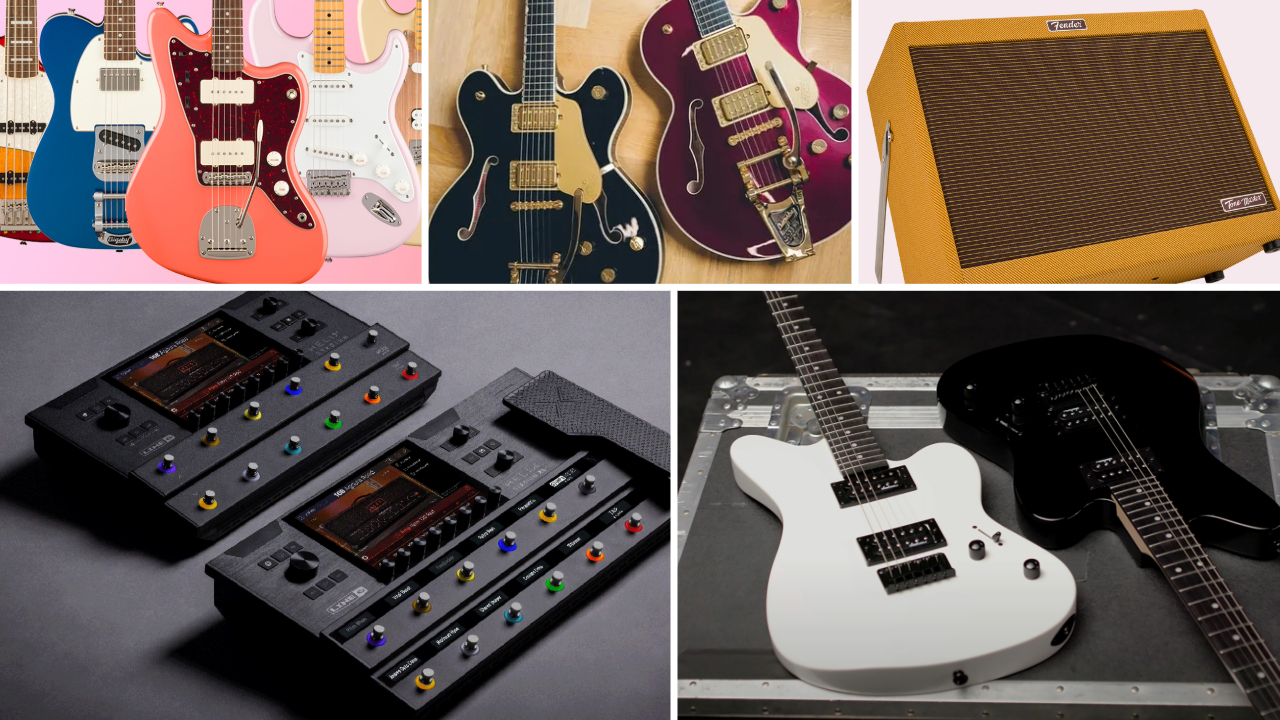Interview: Lindsey Buckingham Discusses Turner Guitars and His New Album, 'Seeds We Sow'

There’s “The Big Machine” and “The Little Machine,” according to Lindsey Buckingham, the creative force behind the juggernaut edition of Fleetwood Mac.
There's no need to identify the Big Machine.
But the Little Machine is his humble description of his solo career, which is heating up as the weather cools. His first self-released album, Seeds We Sow, dropped on September 6, three days before he kicked off a 31-city North American tour in Reno, Nevada.
Guitar World caught up with the Rock Hall of Famer for a brief chat in Minneapolis, during which he said we likely haven’t heard the last from the Big Machine, either. But for now, he’s enjoying the reception his new songs are earning on the road.
GUITAR WORLD: Tell us about the new album.
Fleetwood Mac had gotten off the road and I had no real plan to make an album. But the time opened up and so I filled it. I did not have a concept or an agenda, musically or lyrically, of any kind going into it. In fact, I only had rough ideas for songs. I didn’t have a lot of fleshed-out material. So the whole thing took, I guess, something like a year, but I think what made it so good as it turned out was that it was kind of off-hand and there was no one thing I was trying to accomplish. And it kind of let the work lead me a little bit, which it does anyway when you’re working on your own. There was a kind of a culmination of everything I have done in the last few years that came together in one place.
Seems to be selling pretty well for a self-release.
Get The Pick Newsletter
All the latest guitar news, interviews, lessons, reviews, deals and more, direct to your inbox!
I’m not paying a whole lot of attention to it at this point. The thing is that, relative to the big machine, it has never really been my objective to sell a lot of records. I assume that the people who have the ears for these solo works will find them. I also assume that the audience for solo works is gonna be much smaller than it would be for the Fleetwood Mac audience because it’s a more esoteric thing I’m doing, and it always has been. Even Warner Brothers, back in the day, when I first started making solo albums, always kind of glazed over and never really was tuned into what I was doing.
But you’re out there playing them now, right?
Yes! … Just got into Minneapolis, so we’re leaving the summer behind here.
So what has the reaction been?
It’s been really good. It’s an interesting equation when you have a body of work that spans a fairly significant amount of time, and you realize there may be a certain faction of people who are less interested in hearing new stuff than stuff that they may be more familiar with. But you find a way to make it work together. We’re doing quite a healthy number of songs from the new album and you work that in with other solo work, and a few Fleetwood Mac gems, and it all seems to work very well together. I’m really pleased with the way the new material has been going over.
Let’s talk about guitars.
I have a lot of guitars that are made by Rick Turner.
You were involved with designing the Turner 1 model, correct?
Yeah. Before we joined Fleetwood Mac, I was been playing a Stratocaster as an electric guitar, and it was well-suited to my finger style. When we joined the band, they had a pre-existing sound that was rather fat. And it needed a fatter-sounding guitar. I started using a Les Paul, which was not particularly well-suited to the orchestral style of playing that I had. So at some point, after I had met Rick Turner, I asked him if he could design me something that had a fatter sound, something between a Les Paul and a Stratocaster, but that had the percussive elements that would respond well to my style. And that’s what he came up, and of course I have been using that model guitar for years and years now.
And your style, of course, relies heavily on finger-picking. Is that a choice of comfort or tone? Or both?
Well, it’s not really a choice at all. It’s just, you know, I started playing very young and from early on, the people I was listening to had some element of finger style. Probably the first guitarist I was emulating was Scotty Moore, when I was maybe 6 or 7. And he played with a pick, but he also used fingers. And a lot of the session players, like Chet Atkins, they played with fingers or a pick. Then I listened to a certain amount of light classical guitar playing. And of course later on, when the first wave of rock ’n’ roll kind of fell away, folk music was very popular and very influential in my style.
So it was really less of a choice than what I fell into. I use a pick occasionally. I certainly use it more in the studio when you want to get a certain tone. But it’s just the way I came up. I wasn’t taught. I just sort of figured things out on my own terms. I guess that was one of the ways that I became confortable and it just kind of set in.
Do you use other Turner models as well?
Since [Turner designed the Turner 1 model], he’s come up with some other designs. There’s this one model called the Renaissance, which is a hollow body, but it has no hole or F-holes or anything. It’s a sealed-off, thin, hollow-body guitar that is really, really great for plugging in onstage and for the acoustic kind of thing that I like to do without worrying about any kind of feedback or anything like that. It’s almost sort-of a halfway point between a full-on acoustic and an electric.
Is that the one you have on the cover of “Seeds we Sow”?
No, actually, that’s a John Carruthers guitar, which I don’t play at all. But it photographs well.
Do you still use the Gibson Chet Atkins acoustic?
Oh yeah, I use that on a couple of songs. On “Big Love” and “Go Insane.”
Do you use the same guitars and gear on tour that you use in the studio?
Well, you just use whatever seems to work. You just kind of find stuff. I’ll go back to the Strat, or sometimes I’ll use a Roland Synth, I mean there are so many things that you wouldn’t want to get into on stage that you can play with in the studio.
Do you remember your first guitar?
When I was about 8, I got for Christmas a Harmony brand. It was like a three-quarter-size guitar, acoustic of course. I believe at the time it was something like $35. Which was a lot more money back then. I had that guitar until I was about 11, when I got a used Martin, a small, mahagony, I don’t know the model. It was from the ’40s. It was great.
What’s next for Lindsey Buckingham?
Well, we just started his tour so we have quite a bit more to do after this. We’re just finding our legs. So we’re looking forward to just seeing this thing play out.
What’s next for Fleetwood Mac?
At some point, Fleetwood Mac probably will reconvene. There is nothing on the books for that yet, but that seems to be the way things go. It’s been the way I’ve kept a certain balance for myself. I’ve got that big machine and I’ve got the small machine and the two things seem to work very well when you can go from one to the other. Certainly, at some point down the line, you’ll see something else from Fleetwood Mac. But we haven’t put anything down on paper about that.
Seeds We Sow, the new solo album by Lindsey Buckingham, was self-released on September 6. For more about Buckingham, look for a "Dear Guitar Hero" feature in an upcoming issue of Guitar World.
